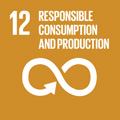- Docente: Antonio Zanutta
- Credits: 6
- SSD: ICAR/06
- Language: English
- Moduli: Antonio Zanutta (Modulo 1) Antonio Zanutta (Modulo 2)
- Teaching Mode: In-person learning (entirely or partially) (Modulo 1); In-person learning (entirely or partially) (Modulo 2)
- Campus: Ravenna
- Corso: Second cycle degree programme (LM) in Offshore Engineering (cod. 9249)
Learning outcomes
Through this course the student acquires knowledge to integrate modern surveying technologies offered by Geomatics for the metrical study of objects, sites, and territory in a consistent way. The student learns the use of space-geodetic techniques suitable for multi-scale measurements (global to local), and thus he is able to integrate in situ observations, airborne surveying and satellite imagery. 3D data acquisition and modeling is in particular discussed, either for environmental applications and for civil and architectural surveys.
Course contents
The course provides the basic elements of Geomatics treating in a modern way the techniques of terrestrial, spatial positioning and elementary topographical operations employed in offshore engineering surveying.
The course deals with the following topics:
GEODESY
Shape of the Earth - Gravitational Field - Geoid - Heights Definition – Global and Local datum definition and geodetic network positioning - Reference Systems and Reference Frames – Approximate reference surfaces and coordinate systems - Geoidal Undulation.
TOPOGRAPHIC SURVEYS
Leveling, Distance measurement, angle observations: theory, methods and instruments. Topographic laser ranging and scanning, Classification, technique of survey, example fields of application in offshore platforms. Use of digital computers in surveying calculations.
POSITIONING
Introduction to Global Navigation Satellite Systems (GNSS) – Pseudorange and carrier phase observables – Single Point Positioning – Differenced and undifferenced Precise Positioning techniques and introduction to Satellite Based Augmentation Systems (SBAS).
MAPPING
Mapping Datum definition – General concepts of mapping projections – Geographical and cartographic coordinate systems – Classification and selection of mapping projections – Scale factor – Mapping deformations – Tissot’s indicatrix – Mercator Projection, Transverse Mercator Projection, Lambert Conformal Conic Projection, Stereographic Projection. Use of cartographic layers in offshore engineering infrastructure design.
Readings/Bibliography
Bibliographic references for home study and further reading materials:
- Slides and notes from the lectures, scientific literature provided in digital format.
- Charles D. Ghilani (2018). Elementary Surveying: An Introduction to Geomatics. Pearson, ISBN-13: 9780134604657.
- Alfred Leick, Lev Rapoport , Dmitry Tatarnikov, (2015). GPS Satellite Surveying. Wiley, DOI:10.1002/9781119018612
- Schofield W., Breach, 2007. Engineering Surveying, 6th edition, Elsevier, ISBN-13: 978-0750669498, ISBN-10: 0750669497
- Shan J, Toth C.K., 2018. Topographic Laser Ranging and Scanning: Principles and Processing, CRC Press.
- John P. Snyder (1987), Map Projection – A working manual, U.S. Geological Survey Paper 1395.
Teaching methods
The lectures will be supplemented with practical exercises in Laboratory or on personal computer using Open-Source software.
These activities are structured so that during each session students will be able to produce practical solutions to the theoretical problems outlined during lectures.
Assessment methods
The examination at the end of the course is in written form with eventual oral integration concerning the topics of the course.
The written test consists of two open questions and four multiple choice closed questions.
The test must be carried out within the indicated time range. From the moment of the beginning it lasts 70 minutes.
The student must answer the questions by writing with a pen or marker on white sheets. Each sheet must be numbered and must have the candidate's name, surname and registration number.
The oral exam will be held at the end of the written test in alphabetical order.
At the time of the test, students must have an identification document (Identity Card or Driving License or Passport) and a badge, and show them to the examiners.
The oral exam consists of an in-depth study aimed at ascertaining the acquired knowledge.
Passing the exam will be guaranteed to students who demonstrate mastery and operational ability in relation to the key concepts illustrated in the course.
Teaching tools
Lectures are conducted in the classroom, the teachers use projected slides or multimedia tools.
A part of the course is pursued through practical exercises, carried out also on personal computer equipment of the students by using preferably open source software provided by the teachers.
Office hours
See the website of Antonio Zanutta
SDGs



This teaching activity contributes to the achievement of the Sustainable Development Goals of the UN 2030 Agenda.
